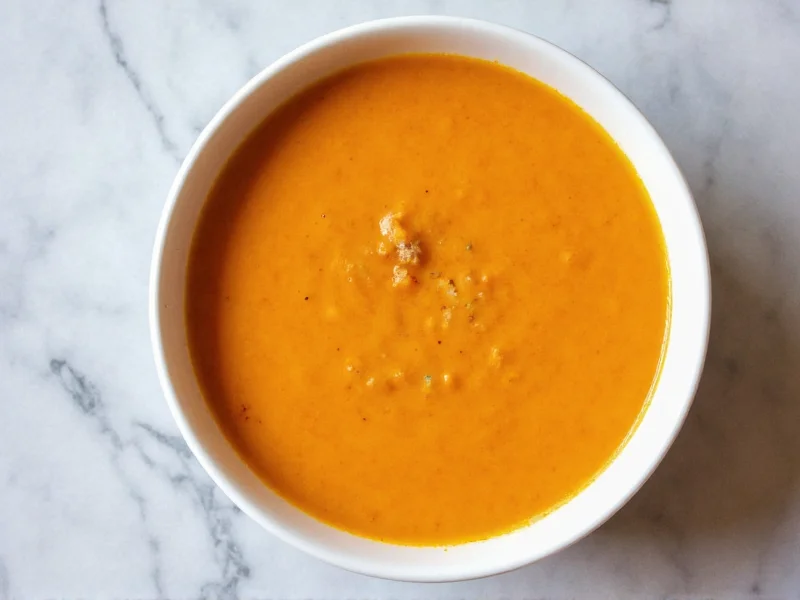When planning a sophisticated meal, selecting the right soup starter creates the perfect culinary introduction. Unlike heartier main course soups, starters should be delicate yet distinctive, preparing guests for the dining experience ahead. The best soup starters for dinner party menus showcase seasonal ingredients while maintaining a light profile that won't diminish appetite for subsequent courses.
Essential Qualities of an Effective Soup Starter
Soup starters serve a specific purpose in meal structure that differs significantly from standalone soup dishes. Professional chefs emphasize several critical elements that transform ordinary soup into an exceptional starter:
- Portion control - Maintaining the ideal soup starter portion size of 6-8 ounces ensures guests remain hungry for the main course
- Flavor balance - A well-crafted starter offers complexity without heaviness, often featuring bright acidic notes to awaken the palate
- Temperature precision - Hot starters should be served between 160-180°F (71-82°C), while chilled varieties work best at 40-45°F (4-7°C)
- Visual presentation - Clear broths showcase elegant garnishes, while creamy varieties benefit from artistic drizzles and precise plating
| Type | Best Season | Ideal Pairing | Preparation Time |
|---|---|---|---|
| Consommé | Winter | Roasted meats | 2-3 hours |
| Gazpacho | Summer | Grilled fish | 30 minutes + chilling |
| Vichyssoise | Spring/Fall | Poultry dishes | 45 minutes + chilling |
| Miso Soup | All year | Asian-inspired mains | 15 minutes |
Classic Soup Starter Categories
Understanding traditional soup starter classifications helps home cooks and professionals alike create cohesive meal experiences. Each category serves a distinct purpose in culinary progression:
Clear Broths and Consommés
These transparent preparations represent the pinnacle of soup starter craftsmanship. A properly made consommé requires precise clarification techniques that remove all fat and impurities while concentrating flavors. Traditional French consommé madrilène features tomato and sherry, while Asian variations often incorporate delicate mushroom or seafood broths. When preparing light soup starter recipes in this category, remember that clarity equals quality—cloudy broths indicate improper technique.
Creamy but Light Preparations
Despite their rich appearance, the best creamy soup starters maintain a surprisingly light profile. Vichyssoise (chilled leek and potato soup) exemplifies this category, offering velvety texture without heaviness when properly balanced. Modern vegetarian soup starter ideas often feature cauliflower, asparagus, or celery root purees enhanced with aromatic herbs rather than excessive cream. The key lies in using vegetable purees for body rather than relying solely on dairy.
Chilled Soup Starters
Ideal for warm weather dining, these refreshing options provide a cooling counterpoint to subsequent courses. Classic gazpacho remains the gold standard, but contemporary chefs experiment with watermelon-feta, cucumber-avocado, and heirloom tomato variations. When serving chilled soup starters before main course presentations, ensure proper temperature maintenance—nothing ruins delicate flavors faster than a lukewarm soup.
Avoiding Common Soup Starter Mistakes
Even experienced cooks sometimes misjudge what makes an appropriate starter. The most frequent errors include:
- Overly substantial ingredients - Adding beans, large pasta shapes, or substantial meat portions transforms a starter into a meal
- Flavor conflicts - A strongly flavored soup starter like smoked fish chowder might overwhelm delicate main courses
- Inconsistent temperature - Serving hot soup in pre-chilled bowls (or vice versa) affects both presentation and taste perception
- Excessive seasoning - Starters should enhance, not dominate, the palate
Professional chefs recommend tasting your soup starter alongside planned main course elements to ensure complementary flavor profiles. For elegant soup starter recipes, consider creating a flavor bridge—perhaps using a supporting ingredient from the main course in subtle amounts within the starter.
Seasonal Considerations for Soup Starters
Truly exceptional soup starters reflect seasonal availability and dining expectations. Spring menus benefit from delicate pea or asparagus soups, while autumn calls for roasted squash or apple-based preparations. When developing seasonal soup starter options, prioritize ingredients at their peak freshness—this approach delivers maximum flavor with minimal processing.
For formal dining experiences, consider the progression of temperatures throughout the meal. A chilled soup starter before a hot main course creates delightful contrast, while transitioning from warm to warm maintains comforting continuity. The most sophisticated menus thoughtfully sequence both flavors and temperatures to create a cohesive culinary journey.











 浙公网安备
33010002000092号
浙公网安备
33010002000092号 浙B2-20120091-4
浙B2-20120091-4